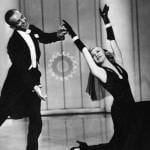A question that sometimes comes up when people are first learning a practice like Centering Prayer is, “How do I sit?” In other words, what is the best posture for a prayer practice like this?
We’ve all seen images of yogis and Buddhist monks sitting for incredibly long periods of time in the lotus position, cross-legged on the floor or on a small cushion, each bare foot tidily resting on the opposite thigh. It looks so effortless, and yet for westerners who have not learned to sit this way in childhood, it’s almost impossible to get into — let alone maintain — this position.
And something pretty much everyone learns, if you posture isn’t optimized for being sustainably still in the silence, the only thing you’ll be meditating on is the discomfort you feel.

In the west, we don’t have a recommended posture, like the lotus position. The general instructions seem to be about as vague as “Sitting comfortably and with eyes closed” (Contemplative Outreach) or the slightly more helpful “Sit down. Sit still with your back straight. Close your eyes lightly” (World Community for Christian Meditation).
But what if you’re not “comfortable” or have difficulty finding that posture where your back in straight? Along the lines of these questions, a reader of this blog sent me the following message.
I read your book, The Big Book of Christian Mysticism and I was so helped by it— thank you. I have a question about meditation. I meditate for 30 minutes morning and night while sitting on my ergonomic office chair. Sometimes (not always) I get unpleasant sensations in my legs. It’s hard to describe, but my legs get restless and achy and tingly and as a result the meditating becomes very difficult. Any ideas on what this might be or what I can do? Thanks!
Here’s my reply, edited slightly for publishing on this blog:
Thanks for your email.
My first thought is, have you tried meditating using other chair(s) and/or position(s)? That might be helpful for discerning if the ergonomic chair/position might actually be putting more stress on your body than you need. Beyond that, I’m really not qualified to offer much in the way of suggestions, but you might want to seek out the advice of a chiropractor or orthopaedist who can review with you the structural dynamics involved in how you are sitting.
Especially if the professional you consult with cannot find anything structurally wrong with your legs, there’s also the possibility that you are simply experiencing bodily sensations that comes and goes — but that can be very distracting! If you are confident that you do not suffer from an injury or are overstressing your legs, it might be interesting to simply try to meditate even while you feel the restlessness/achy/tingling. As you mentioned, it can be difficult to meditate under such circumstances — and yet these body sensations might just be “distractions” that arise while you sit, but can lesson if you simply let them come and go. Not easy I know!
Generally speaking, it’s good to have a meditation posture that enables you to be relaxed yet alert, with your spine straight while seated in a relaxed manner. But there are so many individual factors, from your age, weight, health, etc, that it really is best to get the advice of someone who can address your specific circumstances.
Martin Laird’s wonderful book Into the Silent Land is one of the few books I know of, written from within the Christian tradition, that offers helpful advice regarding the question of posture. Laird writes,
Though not especially well developed, there is an ancient Christian awareness that physical stillness facilitates interior stillness. Evagrius says, “Let us sit still and keep our attention fixed within ourselves, so that we advance in holiness and resist vice more strongly.”… While it is important to remember that we can pray in any position, certain positions are more suited to still prayer, and many Christian contemplatives have come to see the benefits of an erect and stable sitting posture…
Sit on the front portion of the seat. Don’t lean back. Instead, keep the back straight; shoulders back but not rigid. Depending on your height, a lot of desk chairs leave your knees about even with your hips. If possible place a cushion under you to elevate the buttocks so that the hips are slightly above the knees. The elevation of the hips above the knees opens up the abdomen for proper breathing. Feet are flat on the floor. There should be a sense of being solid, a sense of not having to expend energy to sit up. Many people never know what to do with their hands. Just lay them palms down on the knees or gently cupped in the lap. Some find they struggle less with distractions if they keep their eyes closed. Others find that closed eyes increase distractions and so keep them slightly open but without focusing on any particular object. With time you discover which is better for you.
The bottom line: find a position that fosters both calm and attention, that facilitates the ability to stay still for 20 minutes or more so that your body need not struggle to maintain the posture, and that does not cause undue stress or strain, especially on your back or neck. It’s important to accept that this is not just pure relaxation — but neither is it pure “work.” A Buddhist friend of mine likes to compare posture in meditation to tuning a guitar string: “Not too tight, not too loose.” I think that’s helpful advice.
The reader who sent the original question later sent another email to me, saying he found the following video helpful. It features Andy Puddicombe, the founder of Headspace (and a former Buddhist monk), offering a helpful overview to posture for meditation, that is geared toward mindfulness practitioners but is full of good advice for anyone interested in any sustainable practice of silent stillness — including Centering Prayer or Christian meditation.
What advice do you have for finding or maintaining the best posture for silent prayer? I’d love to hear from you, either as a comment here on the blog or on social media.
Enjoy reading this blog?
Click here to become a patron.
Featured photo by Simon Rae on Unsplash.













